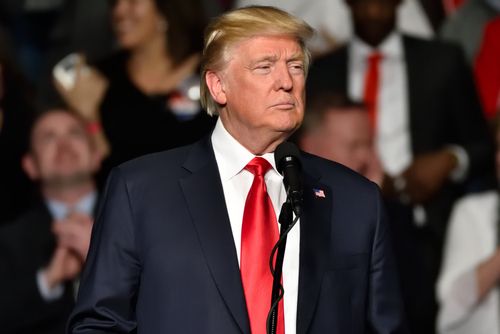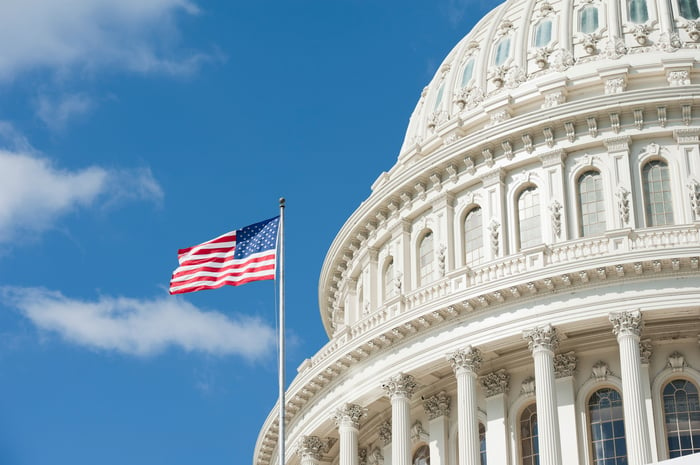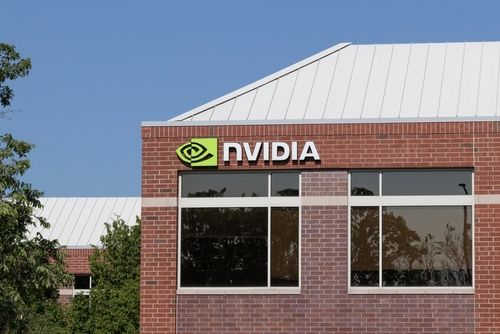Stocks Soared on Trump's Victory. History Says This Is What Happens Next.


We're about two weeks removed from the presidential election result, but one thing is clear: Wall Street is bullish on a second Trump administration, at least for now.
Stocks soared on Wednesday, Nov. 7 as investors anticipated lower taxes and less regulation over the next four years. The financials and energy sectors were big winners, reflecting hopes for less antitrust action, more merger and acquisition (M&A) activity, more initial public offerings (IPOs), and increased business investment for financial companies. The energy sector is also highly cyclical, and investors expect it to benefit from economic expansion and President Trump's own friendliness to the fossil fuel industry.
Through the market close on Nov. 15, the S&P 500 (SNPINDEX: ^GSPC) was up 1.5% in the days since the election, and the Nasdaq Composite (NASDAQINDEX: ^IXIC) has jumped 1.3%. The Russell 2000, which is made up of small-cap stocks that tend to be more volatile than the large caps represented by the S&P 500, was up 1.9%.
The Nov. 7 pop for the S&P 500 was the biggest post-election surge in modern American history, according to Bloomberg, with the broad-market index jumping 2.5% in a single day.
But is that indicative of what the stock market's performance will be like over the next four years? Let's take a look at what history says about the market's response to new presidents.

Image source: Getty Images.
Will the stock market soar under Trump?
Since 1928, the S&P 500 and its precursor index have only jumped 10 out of 25 times on the first day after a presidential election, according to Bloomberg. However, three of those 10 instances have included the past three elections, which also include Trump's first victory and President Biden's win in 2020.
The table below shows how the post-election-day response, which has often been large, compares with the return of the S&P 500 over the next four years.
Election Year | Post-Election One-Day Move | Four-Year Return |
|---|---|---|
1928 | (0.5%) | (67.4%) |
1932 | (4.4%) | 137.1% |
1936 | 1.5% | (35.0%) |
1940 | (3.3%) | 16.1% |
1944 | (0.2% | 28.9% |
1948 | (4.6%) | 47.3% |
1952 | 0.3% | 93.5% |
1956 | (1.0%) | 15.8% |
1960 | 0.4% | 53.9% |
1964 | (0.1%) | 21.1% |
1968 | 0.2% | 10.4% |
1972 | (0.6%) | (9.6%) |
1976 | (1.1%) | 25.2% |
1980 | 1.8% | 32.1% |
1984 | (0.7%) | 61.5% |
1988 | (0.7%) | 52.6% |
1992 | (0.7%) | 70.1% |
1996 | 1.5% | 100.5% |
2000 | (1.6%) | (21.0%) |
2004 | 1.1% | (11.0%) |
2008 | (5.3%) | 42% |
2012 | (2.4%) | 49.8% |
2016 | 1.1% | 57.5% |
2020 | 2.2% | 71.6% |
2024 | 2.6% | TBD |
Source: Ycharts and Yahoo! Finance.
Of the 15 times the S&P 500 fell the day after the election, stocks only had a negative return three times over the following four years. Those occurred during the Great Depression in 1928, the energy crisis in 1972, and the dot-com bubble in 2000. In other words, the market gained 80% of the time.
Of the nine times in history that the post-election bounce has been positive, stocks rose through seven of those administrations, or 78% of the time. That means post-election first-day moves, in and of themselves, are not likely to be a strong predictor of the market's return for the new president's administration.
The president doesn't control the stock market
While any president will exert some influence over the economy and therefore the stock market, that relationship is often exaggerated in the media and among the general public.
After all, stocks have done well under both Democratic and Republican presidents. In fact, they have fared better under Democrats, even though Republicans are perceived as the party that's friendlier to business. Overall, stocks have generated higher returns under a divided government in Washington as well, showing investors may prefer gridlock to a strong tilt to the right or left.
While Trump's proposals like tariffs are likely to affect various industries and, in turn, the stock market, there will be plenty of other factors outside of his control that will impact the economy and stocks, such as the ongoing development of artificial intelligence, foreign wars, natural disasters, energy prices, interest rates, consumer sentiment, the unemployment rate, international relations, and other issues, seen and unseen.
However, above all, the table above is a reminder the S&P 500 tends to go up over time, regardless of who's in the White House or how it performs immediately after Election Day. In 19 of the last 24 four-year presidential terms, stocks rose. You can't simply draw a straight line up from Election Day, but investors who stay invested long term can benefit from the market's upward trajectory no matter what's happening in Washington.







